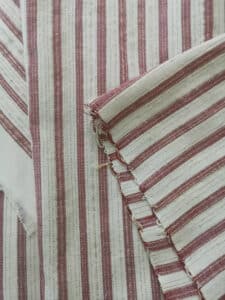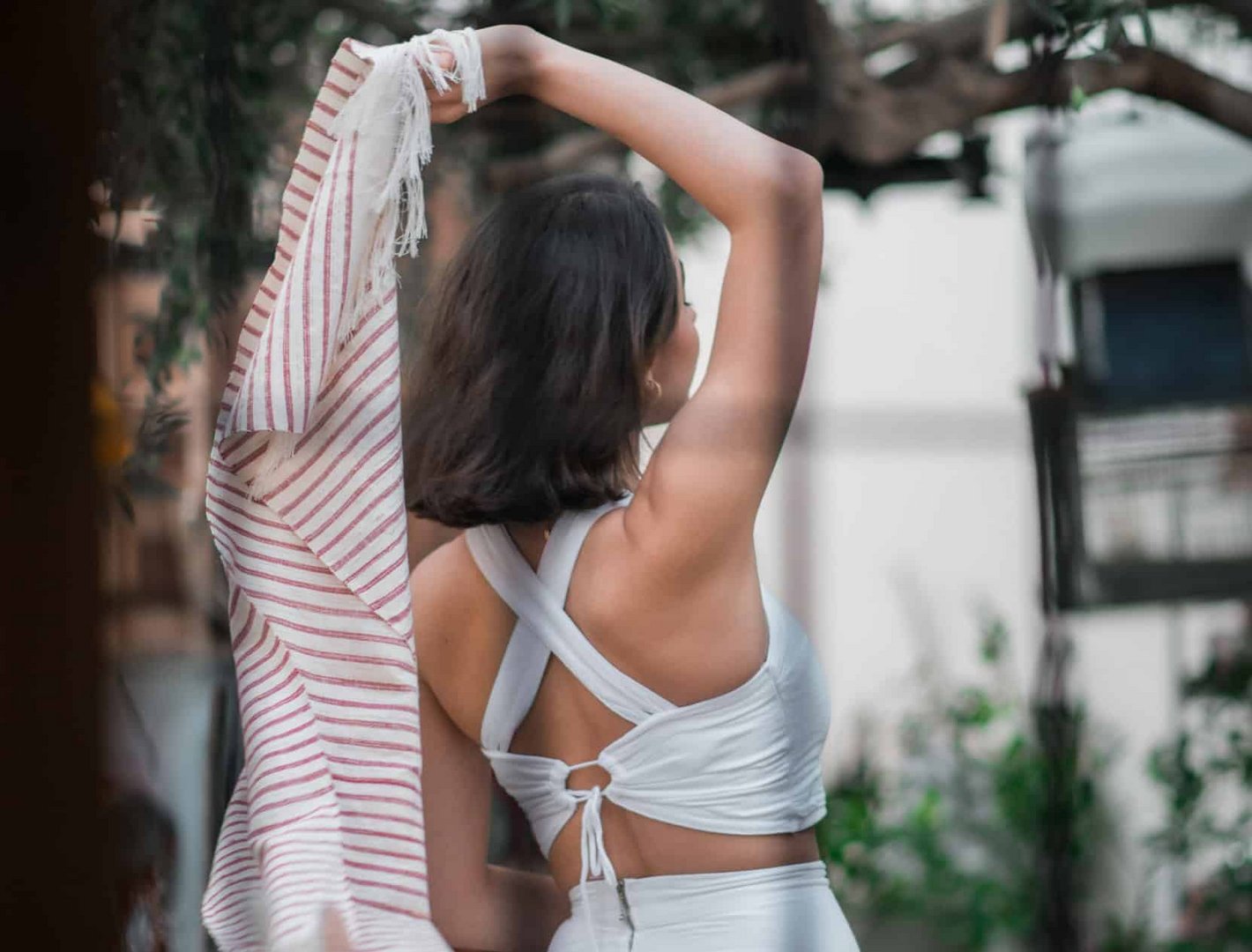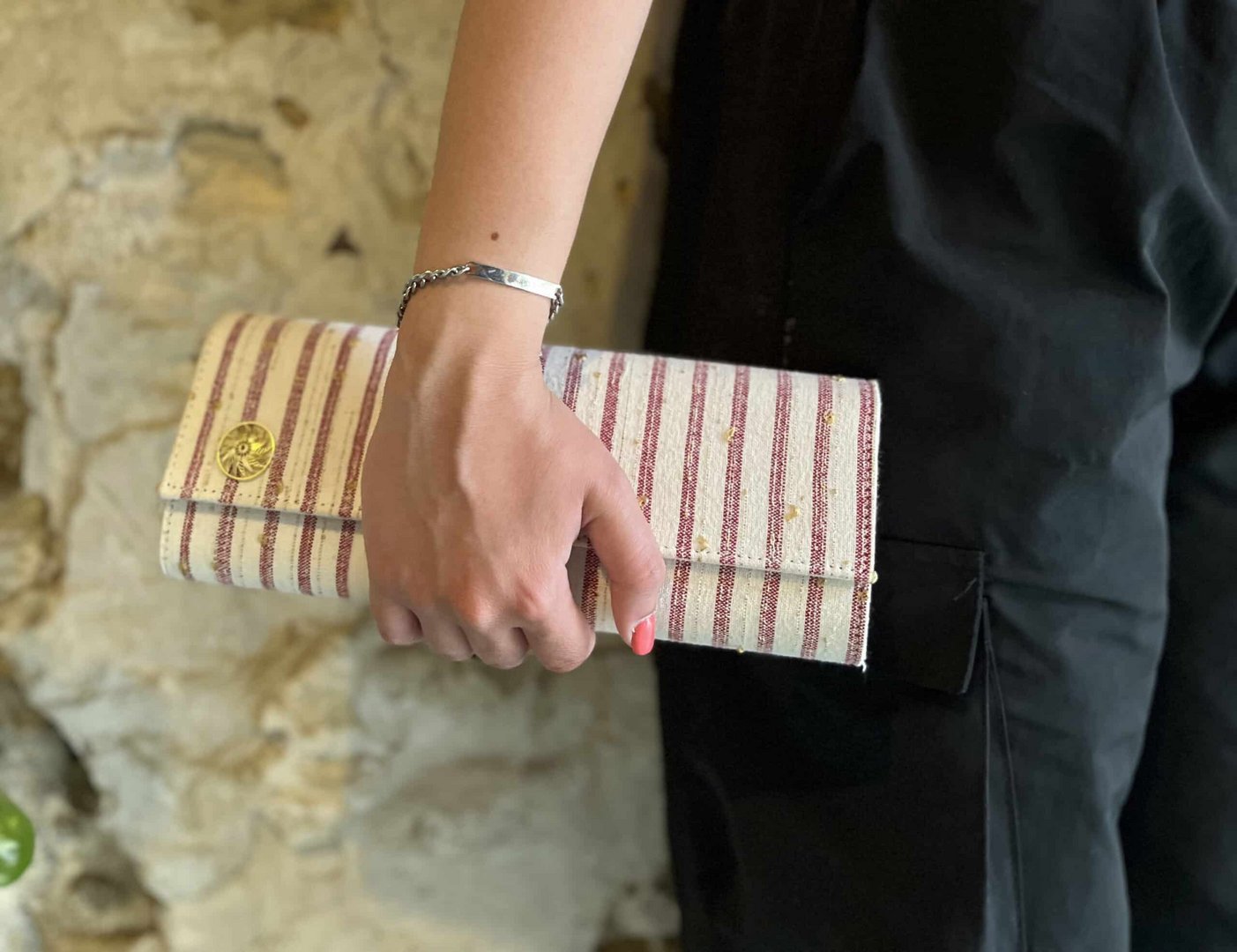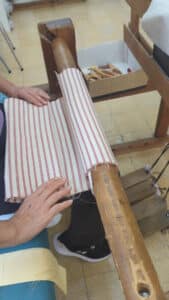What if halloumi or Commandaria were NOT made in Cyprus? Alix Norman discovers a dark secret about one of the island’s most treasured heritage items
“It’s like discovering all halloumi is made in Milton Keynes!” exclaims Andreani. “Or like finding out that the creation of Commandaria has been sub-contracted to a company in Calcutta!”
Just 23 years of age, Andreani Panayide has uncovered a secret that’s been well-kept for years. She didn’t set off to unearth a mystery. But in the process of trying to revive one of the island’s most treasured heritage items, she discovered a dark truth: the making of Cyprus’ most iconic fabric – instantly recognisable textile in the national costume; worn by our forebears on a daily basis – was being covertly outsourced. To Pakistan.
It’s been a quite a journey for this quiet, well-spoken teacher. Born in Nicosia, raised in the Middle East, and now teaching in London, Andreani has a long-held love for her homeland. “You don’t realise how much this island means to you until you leave. From my teenage years, when my family moved to Saudi, I was homesick – for the island’s unique atmosphere, for a way of life found nowhere else in the world. I’d write about Cyprus, paint pictures of what it meant to me. And I began to research its singular history – the traditions and customs that have made the country and its people what they are today.”
This research continued throughout university. Completing her BA in Contemporary Art at Reading, Andreani found many of her pieces directly referenced the island’s history, culture and traditional craft techniques. “And, even when I took up my position as a teacher, I spent my spare time looking for ways to bring this ancient culture into the modern day…”
Fascinated in particular by the hand-made woven fabrics of the past, in 2019, Andreani decided to launch a line of accessories made from Cyprus’ most important heritage material: alatsia.
Utterly unique to Cyprus, alatsia is the stuff our ancestors wore for everything from field work to weddings – immensely durable and stunning in its simple design, which differed from region to region. “Every village once had at least one weaver making alatsia,” Andreani reveals. “My own tiny village, Kritou Marottou, had three!”
While the fabric fell out of use under British rule, during the 1950s, wearing alatsia became a sign of passive resistance against the colonial occupiers; Grievas himself is believed to have said: ‘Let us wear what the land produces, let the abandoned loom be put into operation’.
“Of course, by the mid-60s, this fabric was no longer worn on a daily basis,” Andreani adds. “But still, it’s so indicative of Cyprus – appearing in our saya, the national costume – that I thought it would be fairly easy to go to a fabric shop and buy authentic alatsia. My goal was to use it to make contemporary items that would inspire my generation to connect with their unique heritage…”
It’s here that Andreani discovered the shocking reality. “Although almost every fabric shop assured me they had alatsia, when I visited in person, I knew instantly they were lying.”
In her years of research, Andreani had collected and viewed countless samples of authentic alatsia. Yet the material she was being shown was a shadow of what our ancestors wore. Pressing the shop-owners, asking questions no-one wanted asked, Andreani gradually uncovered the truth. “True alatsia was no longer being made in Cyprus. It was being outsourced to Pakistan, where it was run up on the cheap, a knock-off that hardly bore one wash or wear!”
Stunned by the revelation, Andreani went to the island’s weavers. “‘If I can’t buy it, I’ll have it made,’ I thought. Again, I was wrong. Every weaver I spoke to told me that I should just give up: alatsia was too expensive and time-consuming to make…”
Named for a colloquial word for someone two-faced, alatsia has no right or wrong side – both sides can be worn. And that, combined with a particularly lengthy warp and weft process, means weaving this material is a real challenge; even experts take a day to make one metre!
“But no weaver was willing to help!” she laments. “Until, that is I saw a solitary craftswoman from Gourri featured on TV. Immediately, I contacted her; asked if she could help. And she could! She knew how to make authentic alatsia, and was as excited as I about bringing our heritage back to life.”
The weaver, Elli Filokyprou, turned out to be a true friend of all things Cyprus. And, after months of work, Andreani now has more than 50 metres of rizari alatsia, named for the plant whose roots were originally used to dye the fabric the iconic Cypriot red – a colour believed to bring wealth and fame.
“The original designs differed from region to region. The rural alatsia was red, white and green stripes on a blue background; wedding alatsia was plain white. My rizari alatsia is a simple red, white and gold design based on that worn in the Karpas peninsula; immediately recognisable as the iconic Cypriot fabric. And, once made into bags, blouses and skirts, it’s emblematic of our island’s rich heritage.”
Working under the brand name Folkmona, Andreani has just released her first collection – bags only; clothing is still to come as more fabric is made. But getting here, she adds, has been an amazing journey.
“What I thought would be a simple design process turned into an epic journey – a journey of learning, of joy, of connecting deeply with my roots. My mother’s and grandmother’s generation tend to take traditional crafts for granted,” she concludes. “They grew up with such things. My generation missed out; by the time we were old enough, the village handicrafts were dying out.
“Now, with Folkmona, I’m trying to revive a small but iconic part of our past. Today, I’m bringing the fabric our forebears wore back to life. Bringing the stuff of our heritage into the present and the future.”
For more on this story, visit folkmona.com or the Instagram account @folkmona









Click here to change your cookie preferences